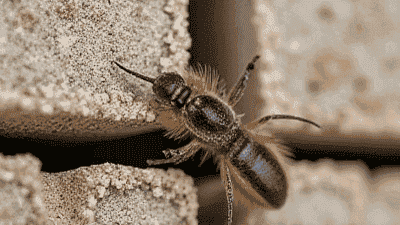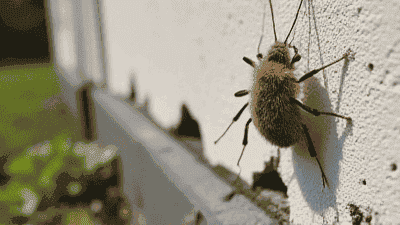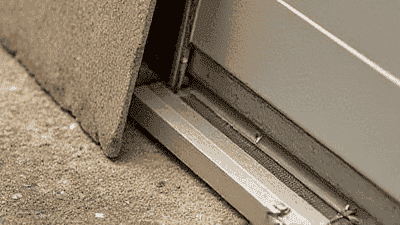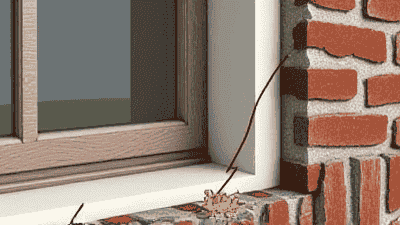
Pests are a common concern for homeowners and businesses alike. Whether one is dealing with rodents, insects, or larger wildlife, pests can cause significant damage, spread diseases, and create an uncomfortable living environment. Among the various strategies for pest control, one fundamental yet often overlooked method is sealing cracks and openings in buildings.
The integrity of a building plays a crucial role in pest prevention. A well-maintained structure not only enhances the aesthetics of a property but also provides a barrier against unwanted pests. Over time, buildings develop cracks and crevices due to natural settling, weathering, and wear and tear. These fissures can quickly become entry points for pests seeking shelter, food, and warmth.
When pests find easy access points, they are more likely to establish themselves within the structure. This can lead to infestations that require significant time and financial resources to manage. Therefore, maintaining the integrity of a building by sealing cracks is a proactive measure that can prevent infestations before they occur.

Several types of pests can gain entry into a building through cracks and openings. Understanding the specific pests that are likely to invade can help property owners take targeted action. Here are some common pests known for entering through cracks:
Rodents, such as mice and rats, are infamous for their ability to squeeze through tiny openings. They can enter through cracks as small as a quarter inch wide. Once inside, rodents can reproduce quickly, leading to large infestations. They pose significant health risks by contaminating food and surfaces with their droppings and urine.
Various insects, including ants, cockroaches, and termites, can also enter a building through cracks.
Ants: Ants often follow pheromone trails and can find their way inside through tiny crevices. Once they locate a food source, they may establish colonies indoors.
Cockroaches: These pests are nocturnal and can enter through small cracks near plumbing and electrical fixtures. Cockroaches are known carriers of allergens and diseases.
Termites: Termites can enter buildings through cracks in foundations, walls, and even around doors and windows. They primarily feed on wood, causing serious structural damage.
Spiders often enter buildings through cracks and gaps, seeking shelter and prey. While most spiders are harmless, some can be venomous, posing risks to residents. Notably, the black widow and brown recluse are two spider species that are particularly concerning.
In addition to insects and rodents, larger wildlife, such as raccoons and squirrels, can also gain entry through cracks and openings in roofs, chimneys, and attics. These animals can cause significant damage to structures and may carry diseases.
Preventing pest entry through sealing cracks is not only essential for maintaining a healthy living environment but also offers economic advantages. Here are some financial considerations regarding pest prevention:
When pests infiltrate a property, comprehensive pest control services may be necessary to eliminate infestations. These treatments can be costly, especially if the problem has escalated. By investing in preventative measures, such as sealing cracks, property owners can save money by reducing the likelihood of infestations.
Pests can cause significant damage to homes and commercial properties. Rodents can chew through electrical wires, create holes in insulation, and damage walls. Termites can compromise the structural integrity of wooden elements. Repairing this damage can be expensive and time-consuming. Preventing pest entry at the outset can help maintain the condition of a property.
Pests can pose health risks to occupants, leading to medical expenses. For instance, exposure to rodent droppings can result in respiratory issues, while insect bites can lead to allergic reactions. Reducing the likelihood of pest entry through sealing cracks can diminish these risks.

Sealing cracks and openings is a straightforward but vital task for effective pest control. Here are some methods and materials commonly used for sealing:
Caulk is a versatile material often used for filling gaps and cracks around windows, doors, and baseboards. It is available in various formulations, including latex and silicone.
Weatherstripping is an effective way to seal gaps around doors and windows. It can help keep out pests while also providing insulation to improve energy efficiency.
Spray foam insulation is a great option for sealing larger gaps and cracks, particularly in attics and crawl spaces. It expands upon application, creating an airtight seal.
For smaller holes and gaps, particularly those made by rodents, steel wool can be an effective barrier. It is challenging for rodents to chew through steel wool.
For larger cracks in foundations, a concrete patch may be necessary. This option is especially effective for sealing cracks that may allow water intrusion and pest entry.
Installing mesh screens over ventilation openings, chimneys, and exhaust vents provides an additional barrier against pests. Ensure that the mesh has small enough openings to prevent entry.
Regular inspections of a property are essential to identify potential entry points for pests. Here are some areas to focus on during inspections:
Inspect the foundation for cracks, gaps, and signs of moisture. Pay attention to areas where plumbing or electrical lines enter the building, as these are common entry points.
Examine the seals and frames of windows and doors. Look for gaps where weatherstripping may be worn or damaged and check that screens are intact.
These areas are often overlooked but can be entry points for pests. Check for cracks, gaps, and signs of wildlife activity. Ensure that vents are sealed with appropriate materials.
Inspect roofs for missing shingles, gaps, or cracks. Clogged gutters can lead to water damage and create breeding grounds for pests. Ensure that gutters are clear and functioning properly.

Beyond sealing cracks, there are several proactive measures property owners can take to enhance pest prevention. Implementing a comprehensive pest management strategy will create a safer environment.
Keeping living and working spaces clean is essential for reducing pest attraction. Regularly clean floors, countertops, and outdoor spaces to eliminate potential food sources for pests.
Store food in airtight containers to prevent access for pests. Avoid leaving pet food out unattended and clean up spills promptly.
Trim back bushes and trees that touch the building to eliminate potential bridges for pests. Keep mulch and debris away from foundations to discourage insect activity.
For additional protection, consider using traps or monitoring stations to detect and manage pest activity. Common traps include sticky traps for insects and snap traps for rodents.
If pest problems persist, it may be beneficial to consult a pest control professional. They can provide tailored recommendations and treatments based on the specific needs of the property.
While sealing cracks and openings is a key component of pest prevention, education and awareness are equally important. Home and business owners should remain informed about the types of pests present in their areas, seasonal pest activity patterns, and effective pest control measures.
Participating in community workshops, attending gardening clinics, and joining local pest control organizations can provide valuable insights and resources for managing pests effectively.
Preventing pest entry through the sealing of cracks and openings is a crucial element of pest control that should not be overlooked. By adopting proactive measures, maintaining building integrity, and implementing integrated pest management strategies, property owners can create environments that are both healthy and pest-resistant.
Sealing cracks is a simple yet effective approach that can yield significant benefits, including improved safety, reduced property damage, and enhanced overall well-being. Investing time and effort into sealing entry points will ultimately provide peace of mind, knowing that your living or working space is protected from unwanted pests.
Taking control of pest prevention begins with a commitment to maintaining your property and understanding the science behind pest behavior. By prioritizing these measures, homeowners and businesses can contribute to a more sustainable approach to pest management while enjoying a peaceful and pest-free environment.